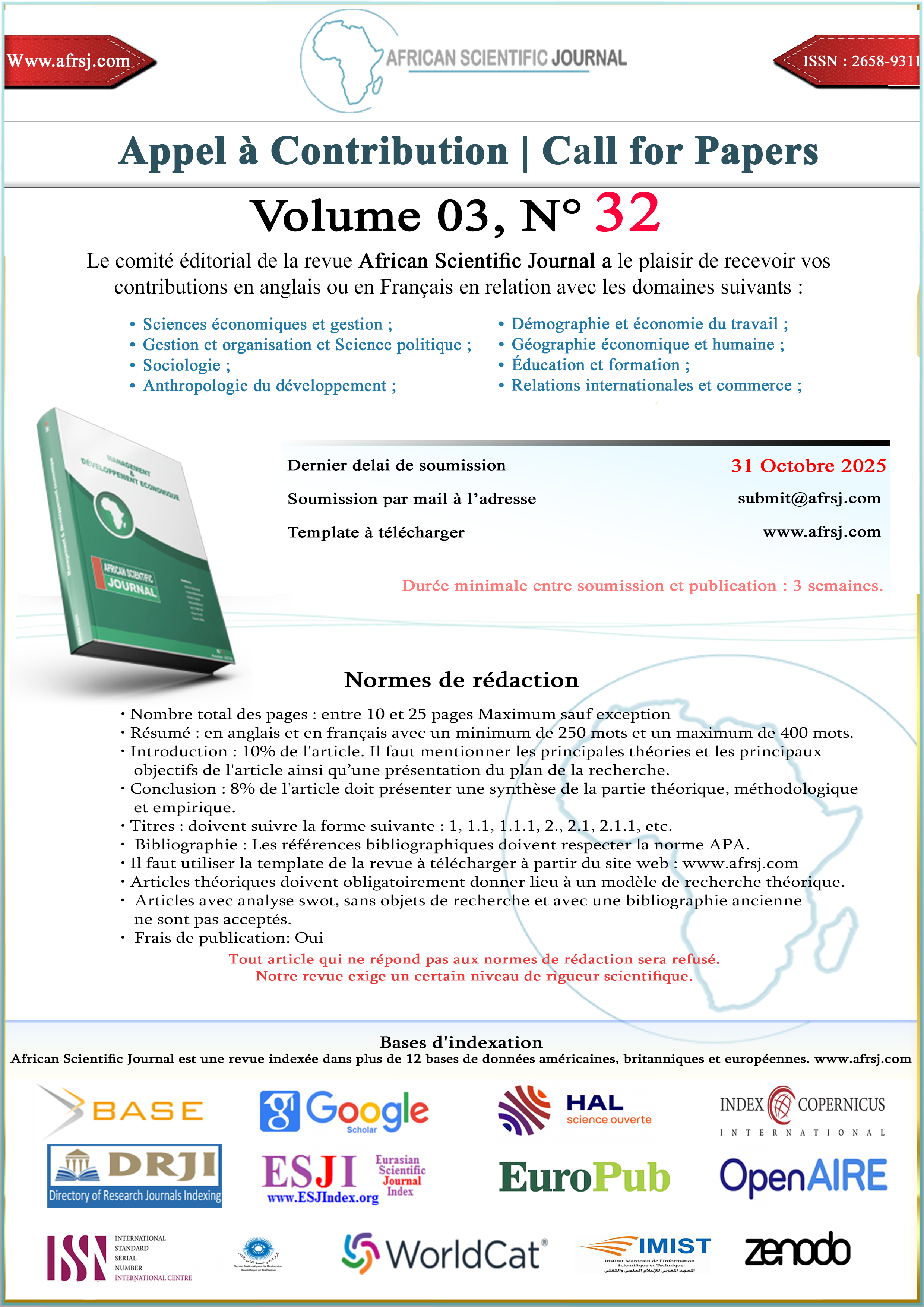Assessment of the impact of blasting operations on the riparian environment of the Sangarédi bauxite mine (CBG mining concession)
DOI:
https://doi.org/10.5281/zenodo.7794449Keywords:
Extraction work, deposit, nuisance, blasting, environment, crushed zone, cracked zone, shaken zone, pollutants, dust, gas, vibration, noise, detonation, toxic, atmosphere, smoke, material blastedAbstract
The calculations and measurements carried out during the extraction works at the sangaredi mine on its various deposits have made it possible to highlight the nuisances generated by the blasting. The results of these studies made it possible to locate three main zones of influence of mining on the environmental environment, namely: the crushed zone (the epicenter), the fissured zone and the shaken zone; this study focuses on the aggressors likely to pollute the physical, biological and human environment during or after the different phases of blasting. Of all the aspects and impacts of blasting on the environment, we had a few unwanted (harmful) pollutants that caught our attention during our research. These include: dust, gases, vibrations and noise.
The detonation of a one-kilogram charge of explosive produces several hundred liters of dry gases (excluding water vapour): CO2, H2, N2, N2O, CH4, CO, NO, NO2, etc. Among which the most toxic, carbon monoxide (CO) and nitrogen oxides (NO and NO2, collectively referred to as NOX), produce severe discomfort and can be fatal at relatively low concentrations. In a construction site, even if the ambient atmosphere is considered breathable, gunfire fumes can be trapped by the pile of felled materials.
Downloads
Published
How to Cite
Issue
Section
License
Copyright (c) 2023 African Scientific Journal

This work is licensed under a Creative Commons Attribution-NonCommercial-NoDerivatives 4.0 International License.





















